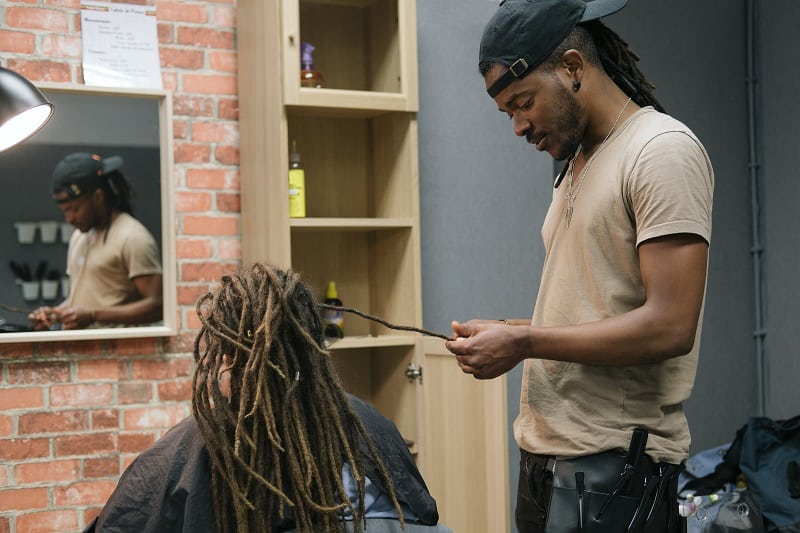
64 Trendy Man Bun Braids Hairstyles
Buns evolved from trendy to standard for men’s hairstyles with longer hair in the mid-2010s, and during this time, a more complex form of it emerged: the braided man bun.
Among different braided hairstyles, men’s braided buns are most commonly seen in the form of single braids and crown braids, and often paired with an undercut, but there are many more variations that can be viewed throughout this article.
See more about - 100+ Best Men’s Haircuts & Hairstyles
1. Cornrowed/Dutch Braided Bun

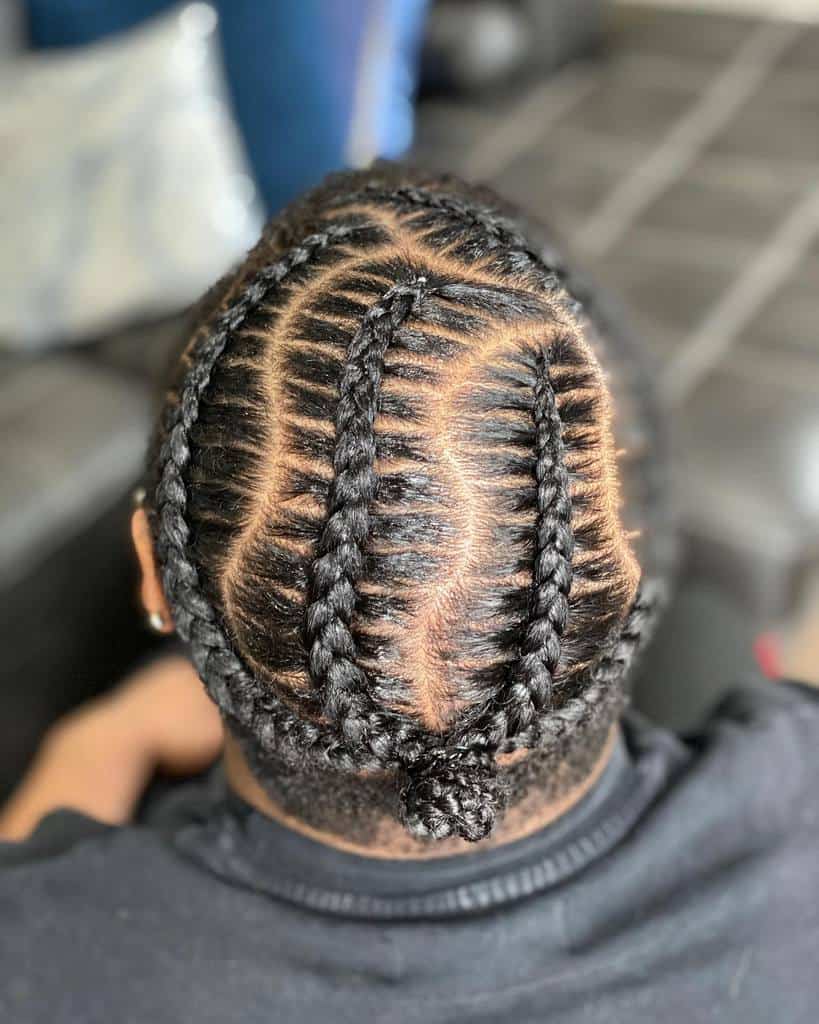
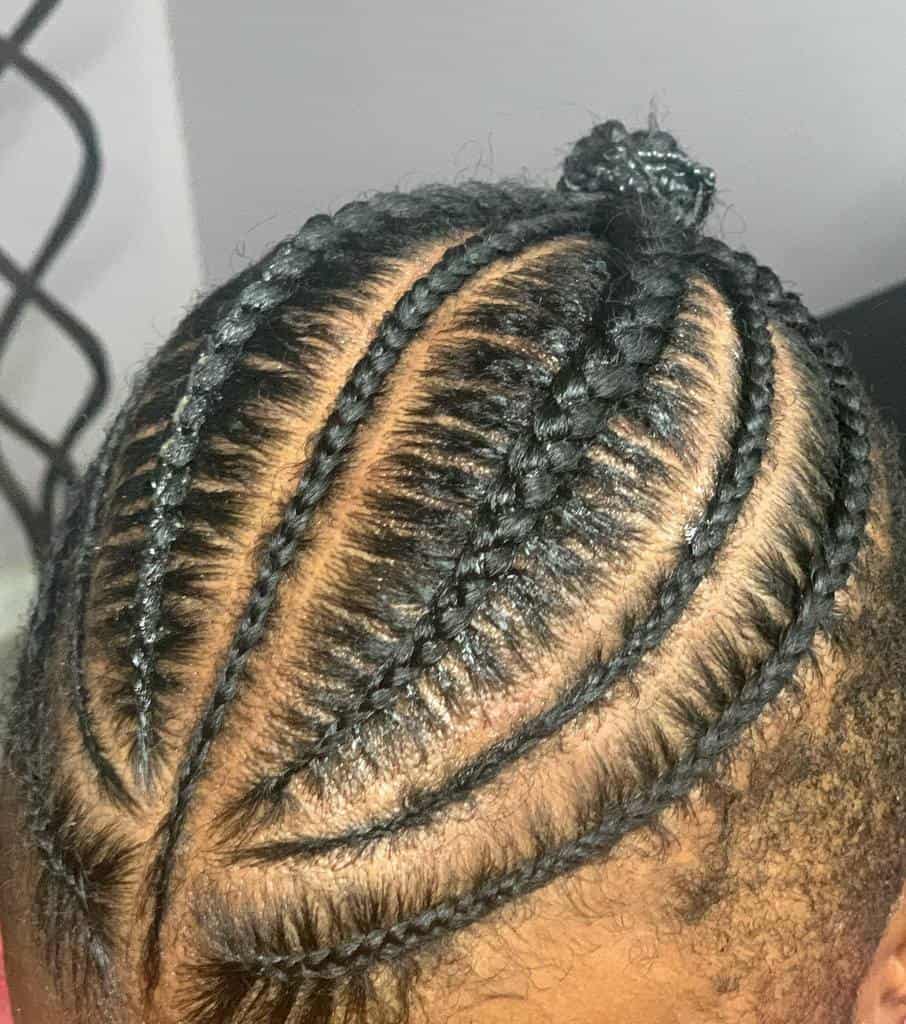
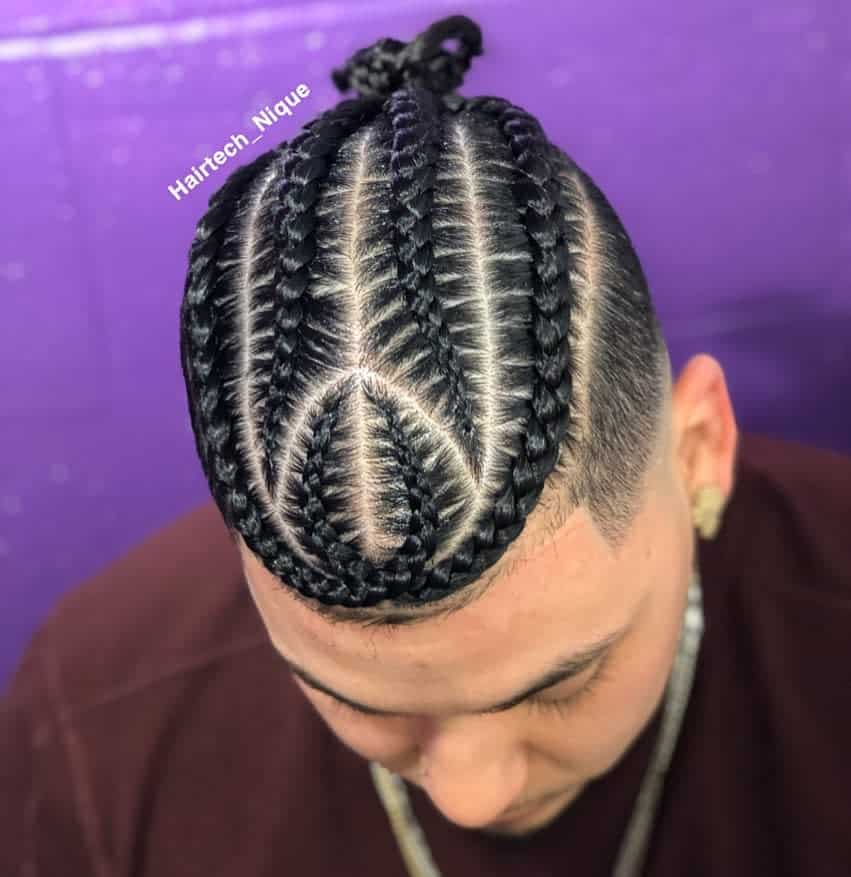

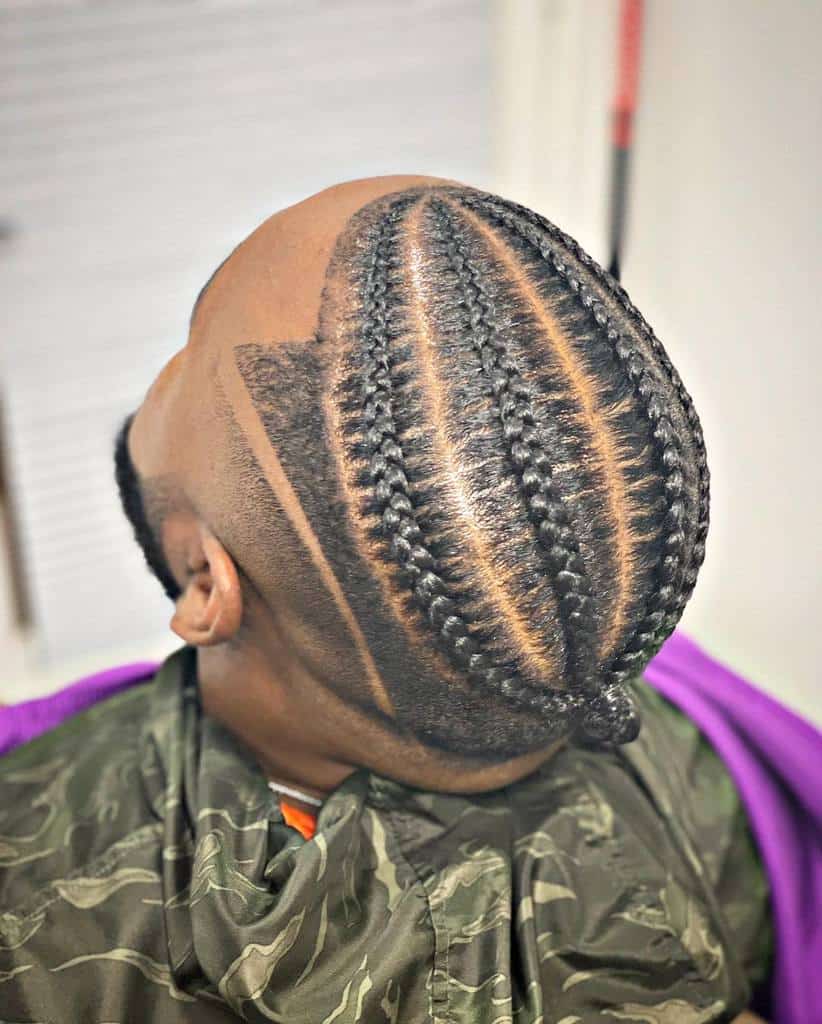

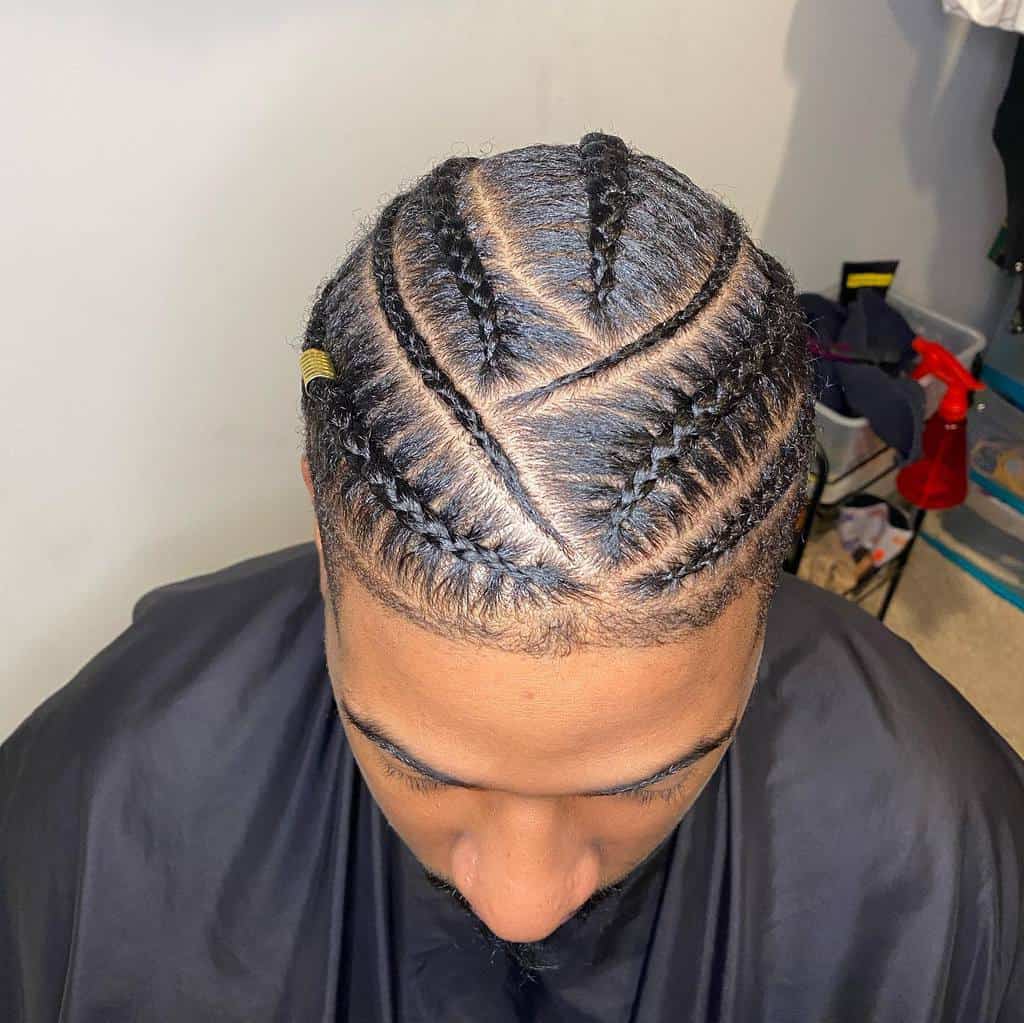
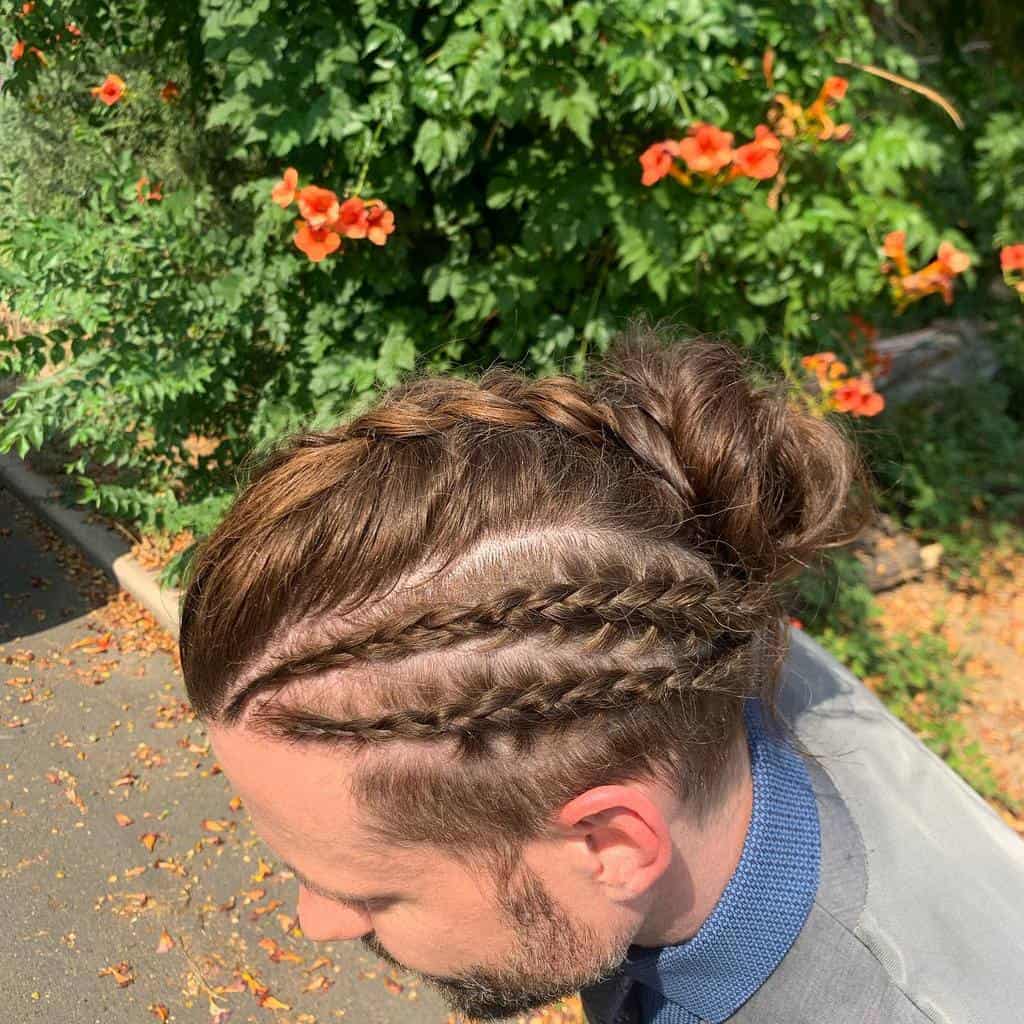
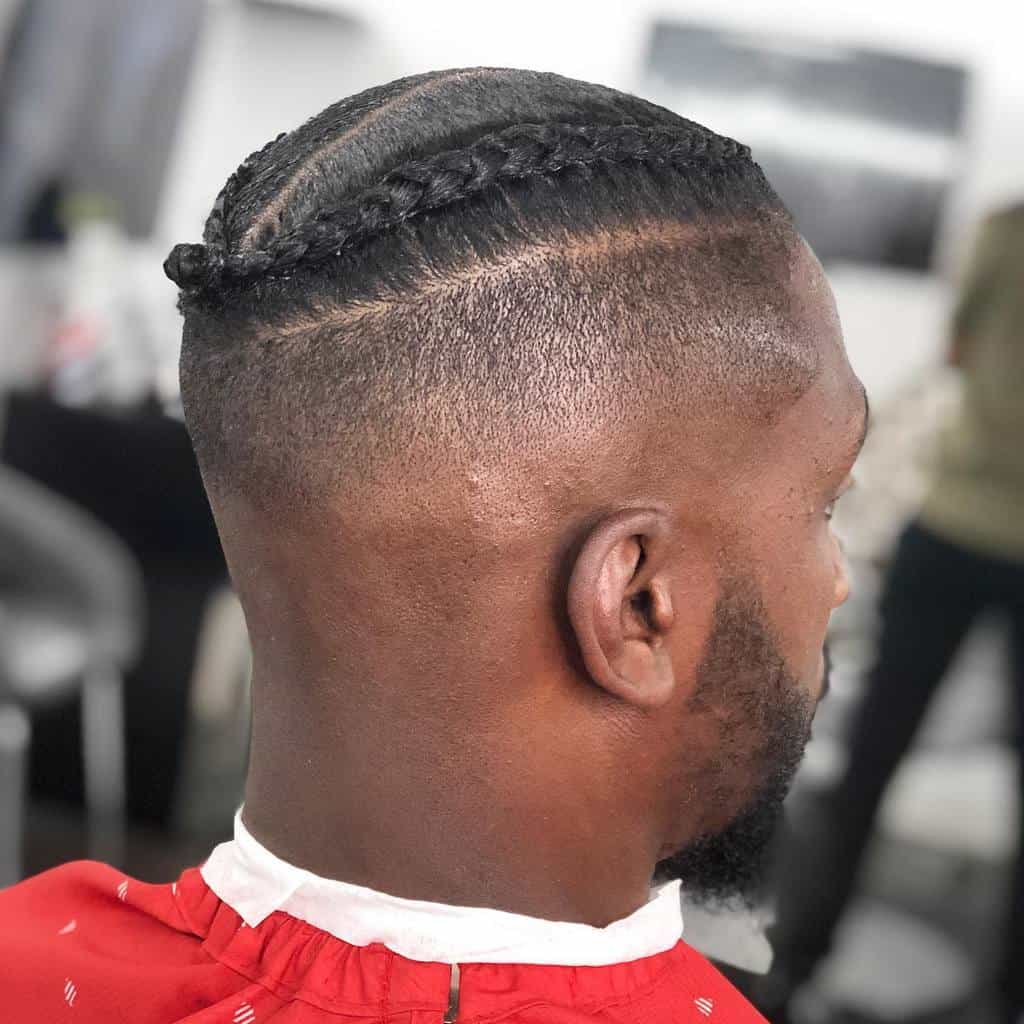
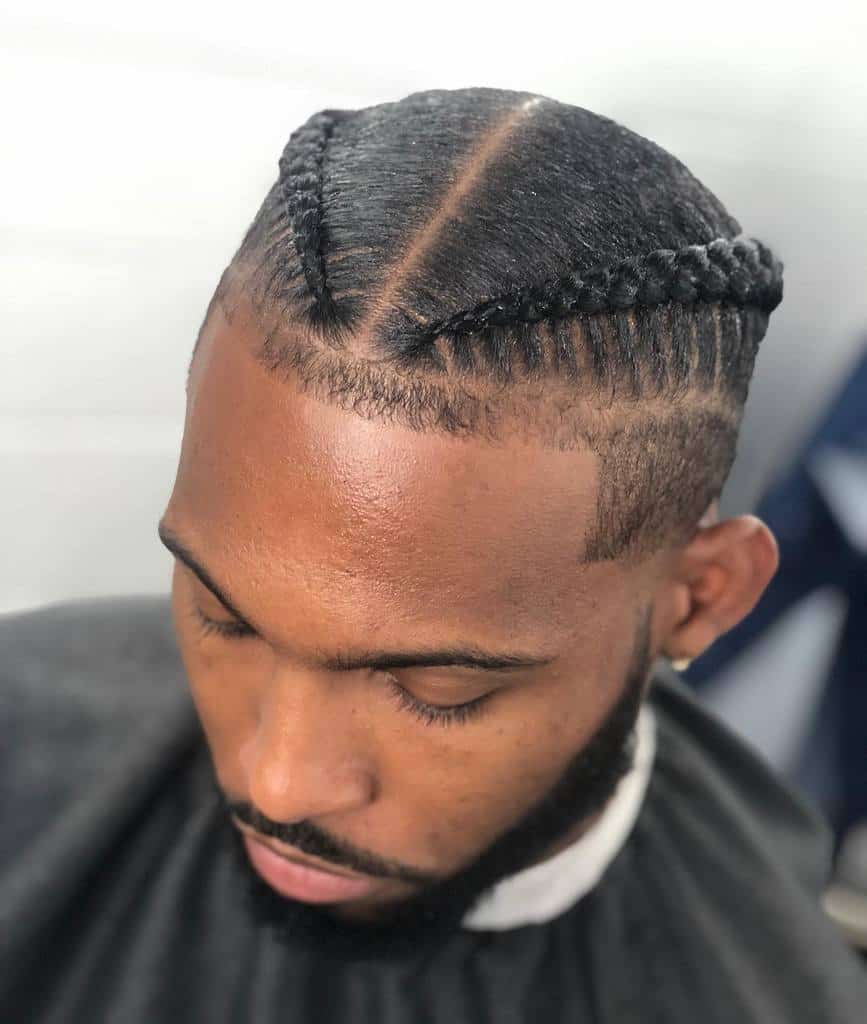
Cornrows and Dutch braids are forms of underhand braids where typically three strands of hair are wound together by first going under the adjacent strand of hair, then over the following strand, picking up hair each time it is wound past the scalp until this process is repeated across the intended area of the scalp.
In contrast, the overhanded braid would bring the strand over the adjacent strand, then under the following strand. The underhanded motion is what creates braids with a tighter appearance than overhand braids, which are most commonly known as French braids, or French plaits.
Most bun braids are typically done with underhanded cornrows or Dutch braids. What differentiates cornrows and Dutch braids is that cornrows tend to be done tighter against the scalp and are often worn as multiple braids, while Dutch braids can be looser and fewer in quantity.
Cornrows tend to hold best with curly hair or natural, afro-textured hair, as these hair types lock the style in more easily than straight hair. It is recommended to use braiding gel or cream to help keep braids intact longer. This braid style is also the most commonly used in various styles of braided buns.
2. Bun Braids with Extensions

As mentioned earlier, hair extensions are an effective way to add length and size to your braids. If you have a short haircut that is not long enough for the braided style you are going for, this creates the illusion of long hair that will make the style easier to attain. This can either be done by adding hair extensions from the beginning of braiding each braid, or starting out the braid with your own hair, then gradually adding pieces of hair while braiding.
The difference between the appearance of these two methods is that adding hair from the beginning of the braid will give the appearance of a looped knob at the front and can allow the color of the added hair to show up from the beginning if it is different from the color of the attached hair. While adding hair gradually allows for a more seamless look. The two methods can be used together as well.
3. Stitch Braided Bun
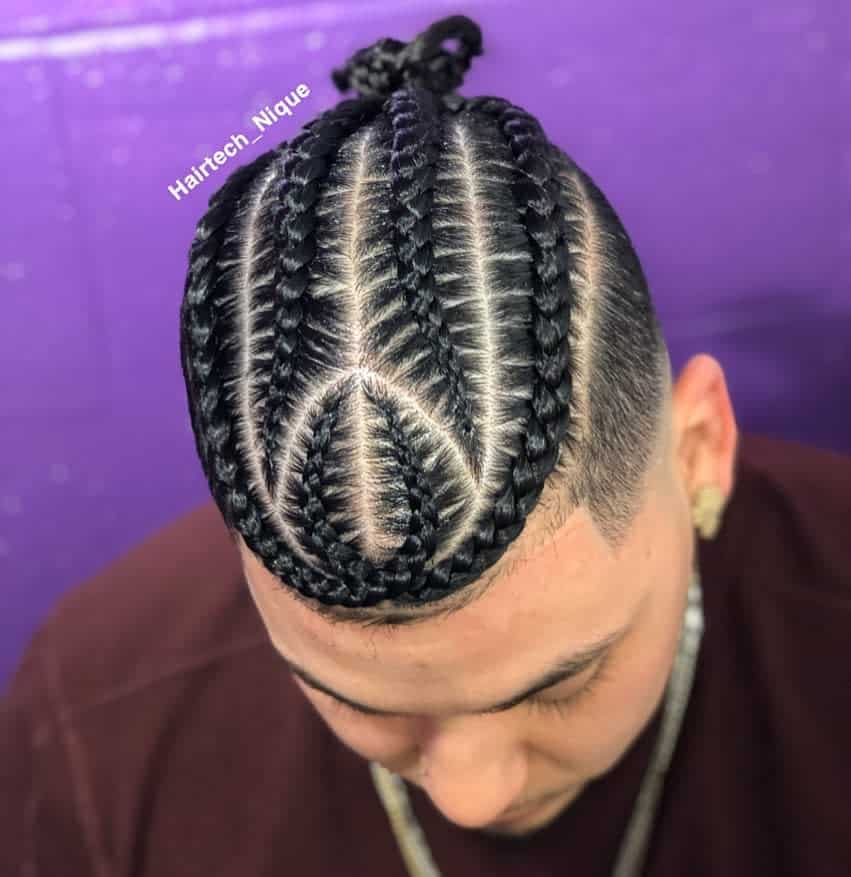
This type of braided bun adds an additional element to the aforementioned methods of styling braids, where each section of hair to be braided is tied tightly with hair elastics in the intended braid pattern before braiding.This creates tight braids that have defined sections and neater lines running perpendicularly under each braid, which is what brings out the appearances of stiches. This braid style is also helpful to those who would like an easier time maintaining sections when braiding the hair.
However, it is important to be aware of how tolerant your scalp is with tight braids, as this style can increase the risk of traction alopecia or hair loss resulting from tight pulling and styling of hair for a long period of time. To minimize risks, make sure the braids are firm but not uncomfortably tight.
4. Full Bun Braids
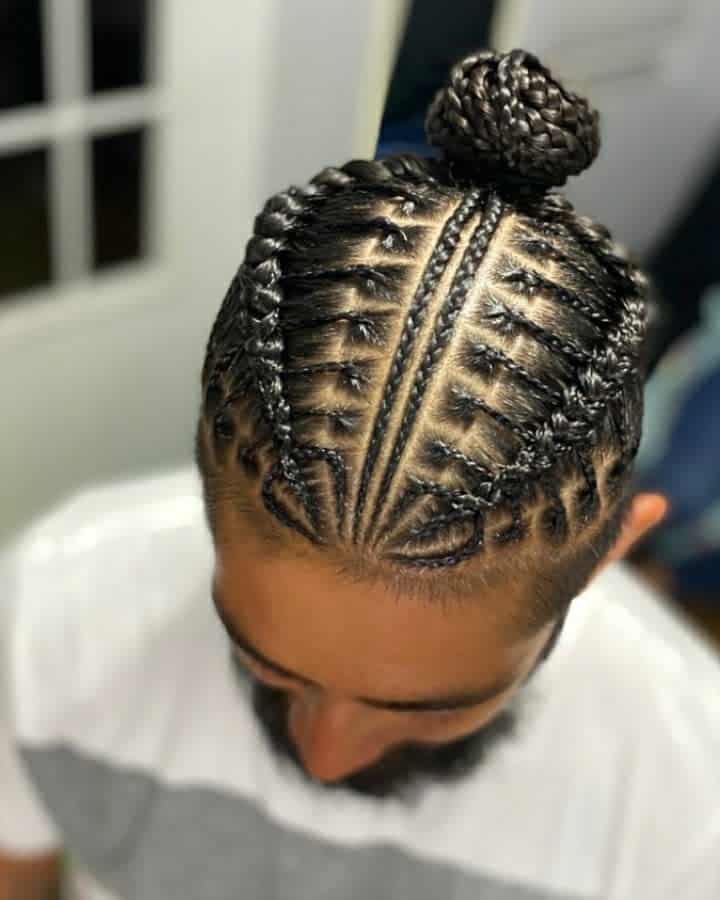
An option of lower maintenance is the full braided bun, which includes all your hair in the braid hairstyle. This allows you to work with your natural hairline and dawn a style with more hair.
What makes this lower maintenance is that there are no parts of the hair that need frequent haircuts for the bun braid hairstyle to look in place.
5. Bun Braids with Undercut
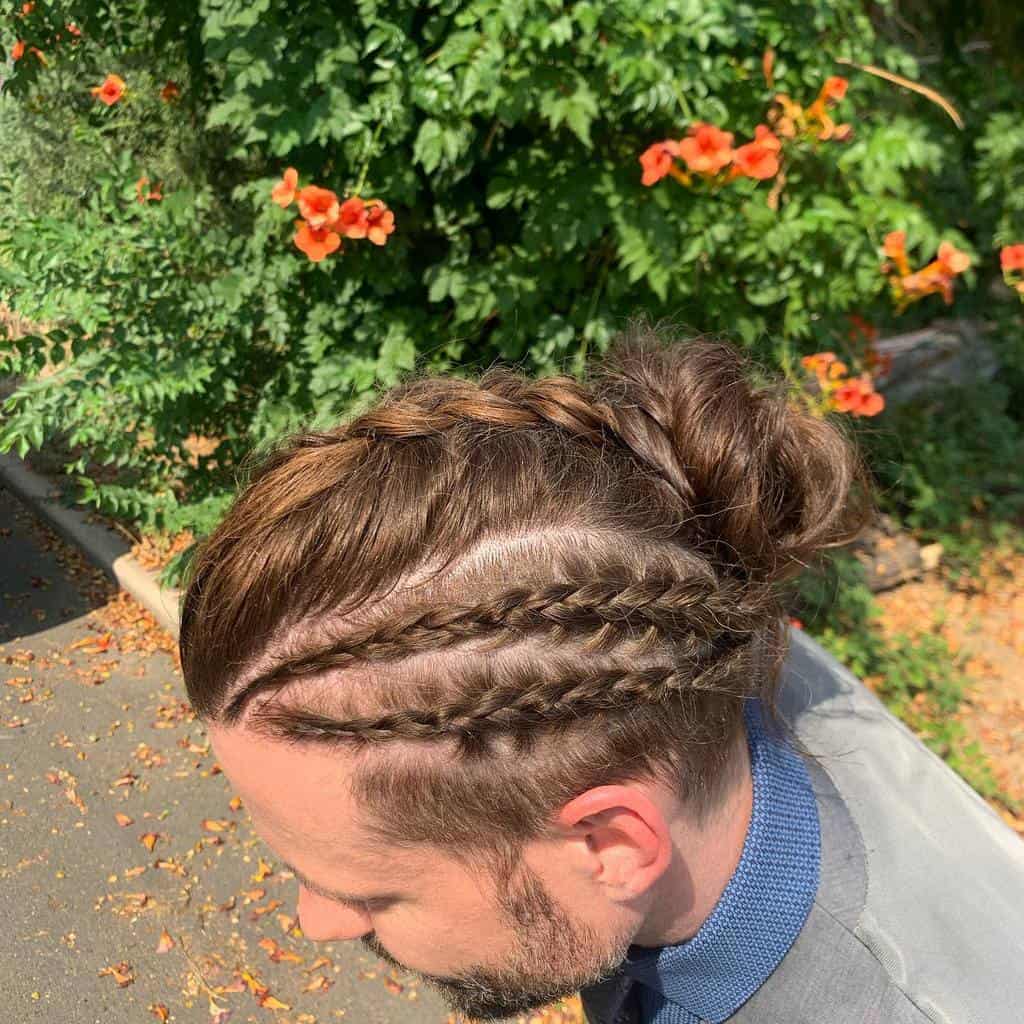
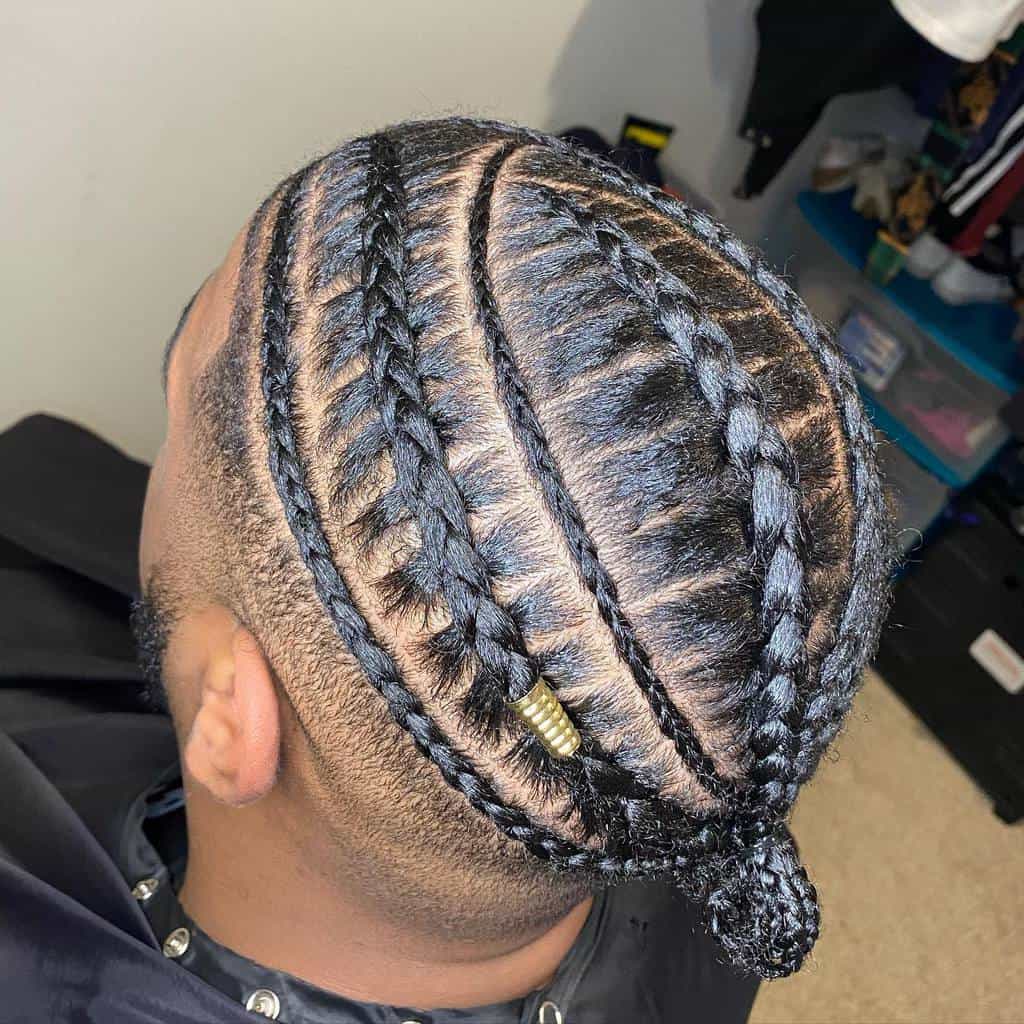


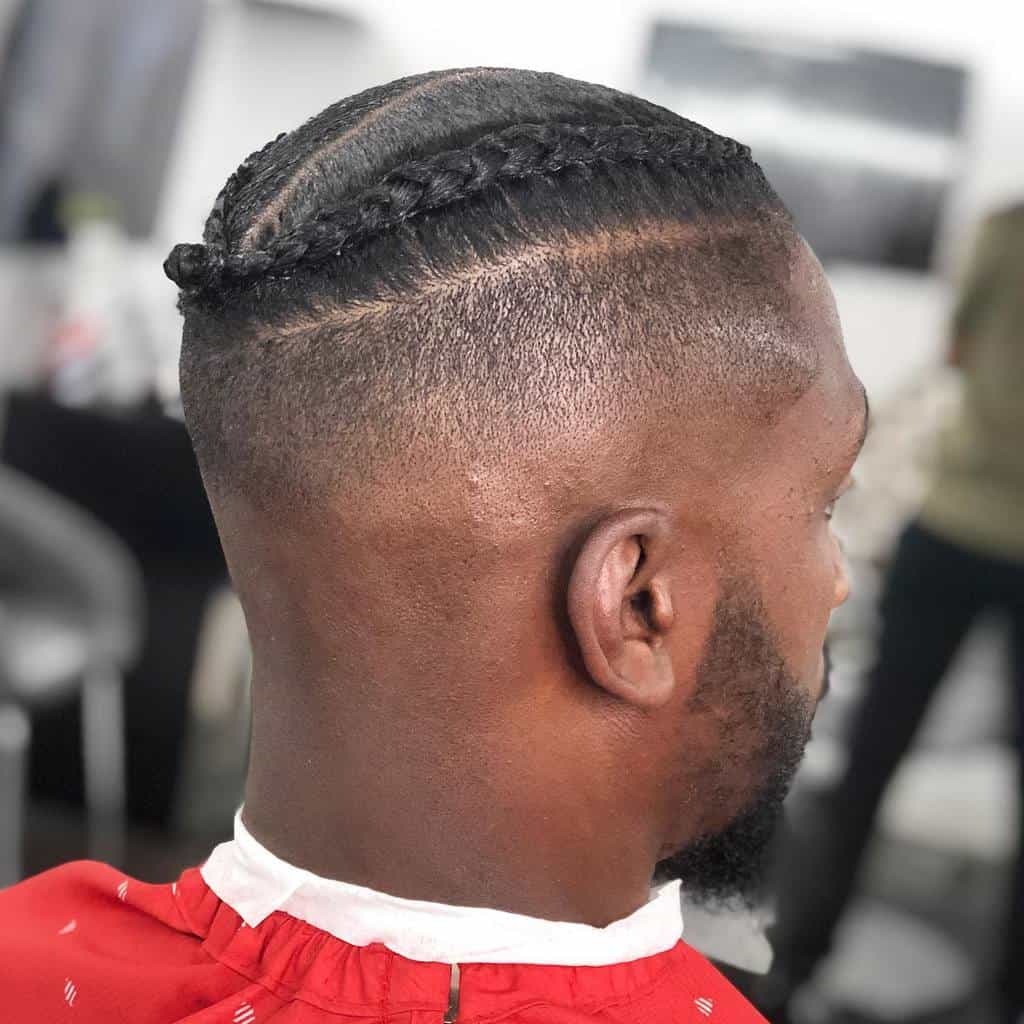
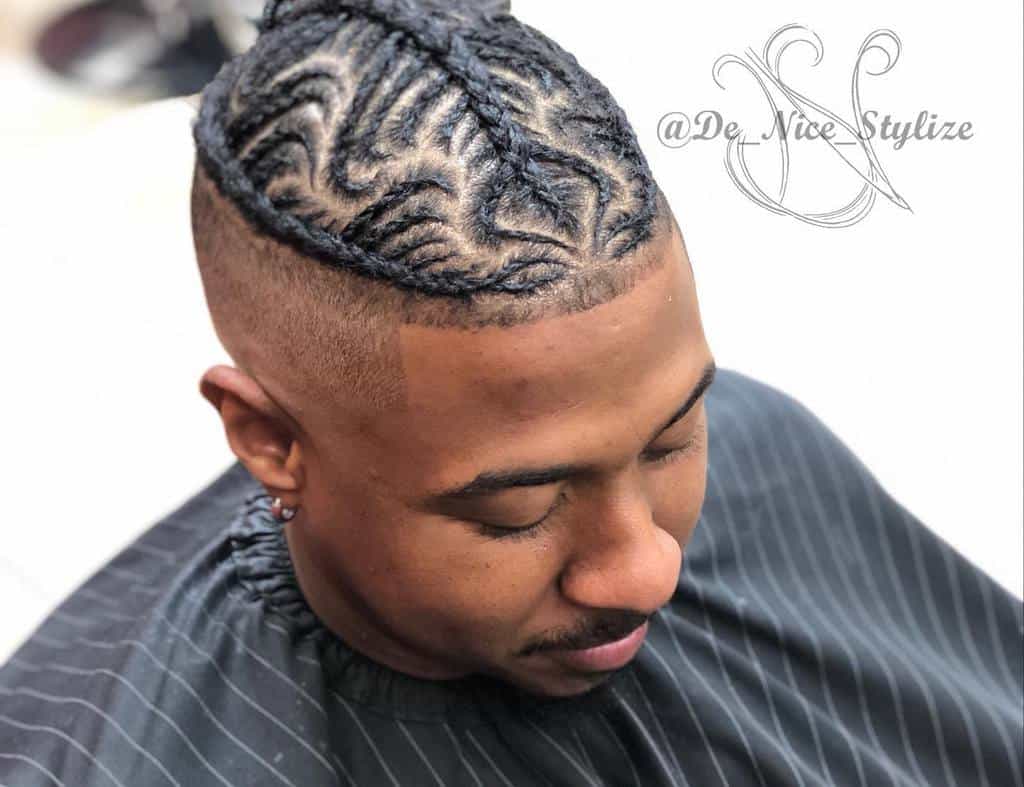

Pairing an undercut with bun braids may mean more haircuts, however, less hair also means less time spent braiding the hair. This combination allows the style to be cleaner cut, but also versatile, as there are many undercut hairstyles to choose from that can influence the height of the braided bun and the amount of hair incorporated into it, from various tapers and fades to more extreme bald undercut haircuts.
Even without long hair, this is more doable as it uses hair from a smaller area of the scalp than full bun braids, and thus, doesn’t need as much length to be styled across the scalp.
6. Braided Topknot
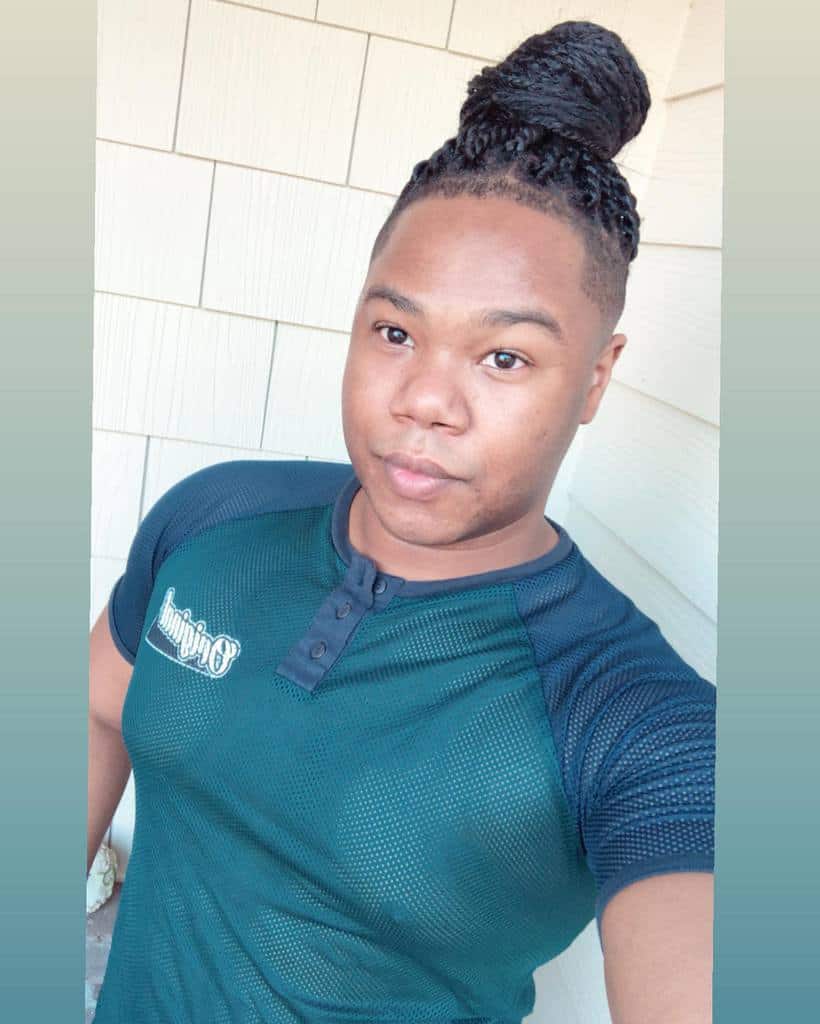
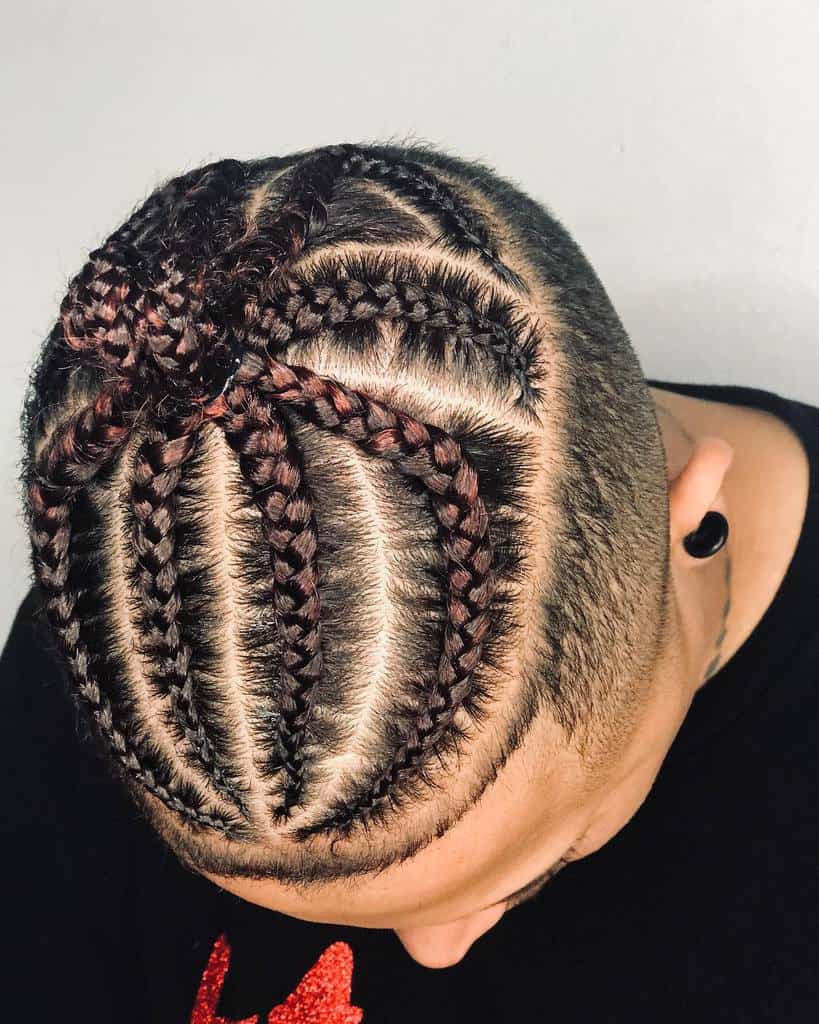
This bun braid hairstyle can be considered a type of high braided bun, but specifically consists of a bun that is placed on top of the head, with its body created by the braids as well.
When viewed from the front, the topknot is the most noticeable compared to other types of high braided buns, and looks especially stylish with long hair.
7. Low Bun Braids

A low placement of a braided bun most commonly includes the whole head of hair, but can be paired with smaller, more subtle undercut haircuts as well. This braided hairstyle appears tamer, more mature, and more suitable for serious occasions than the high braided bun.
8. Tiny Braided Bun


During the early stages of growing long hair, sometimes a tiny bun is the closest thing you can achieve to any type of updo.
However, this shouldn’t stop anyone from going for braided bun styles, as it can still be pulled off quite well, with an understated bun allowing various patterns of braids to take on more attention.
9. Messy Braided Bun

Those who have lived with long hair know that messy buns are a timesaver, and in this case, that extra time could surely be used for the braids. Opting for this bun hairstyle brings braids into a more laidback, effortless look.
10. Crown Braided Bun
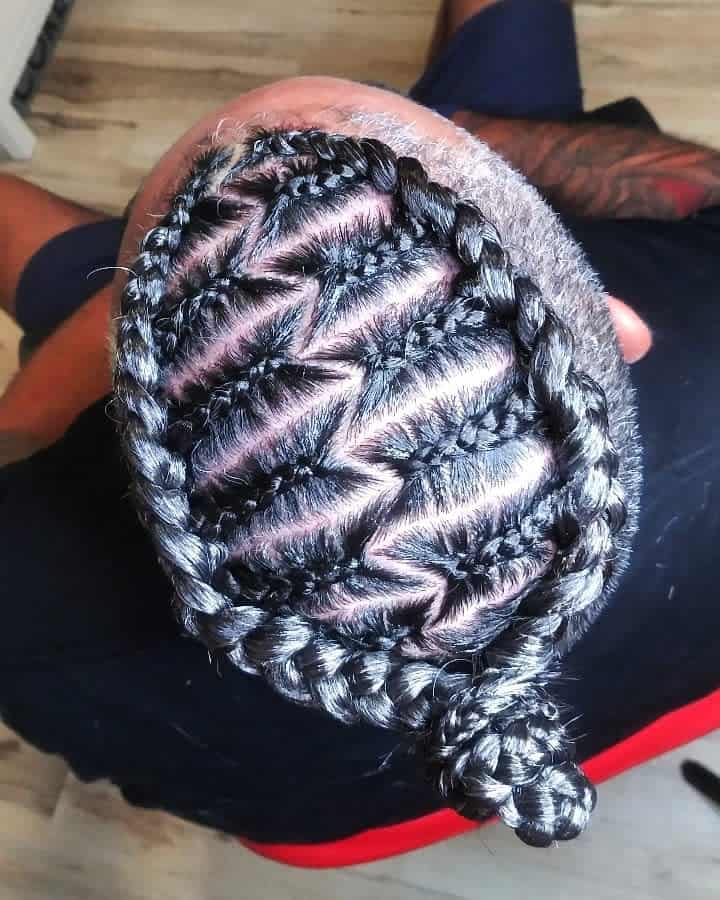
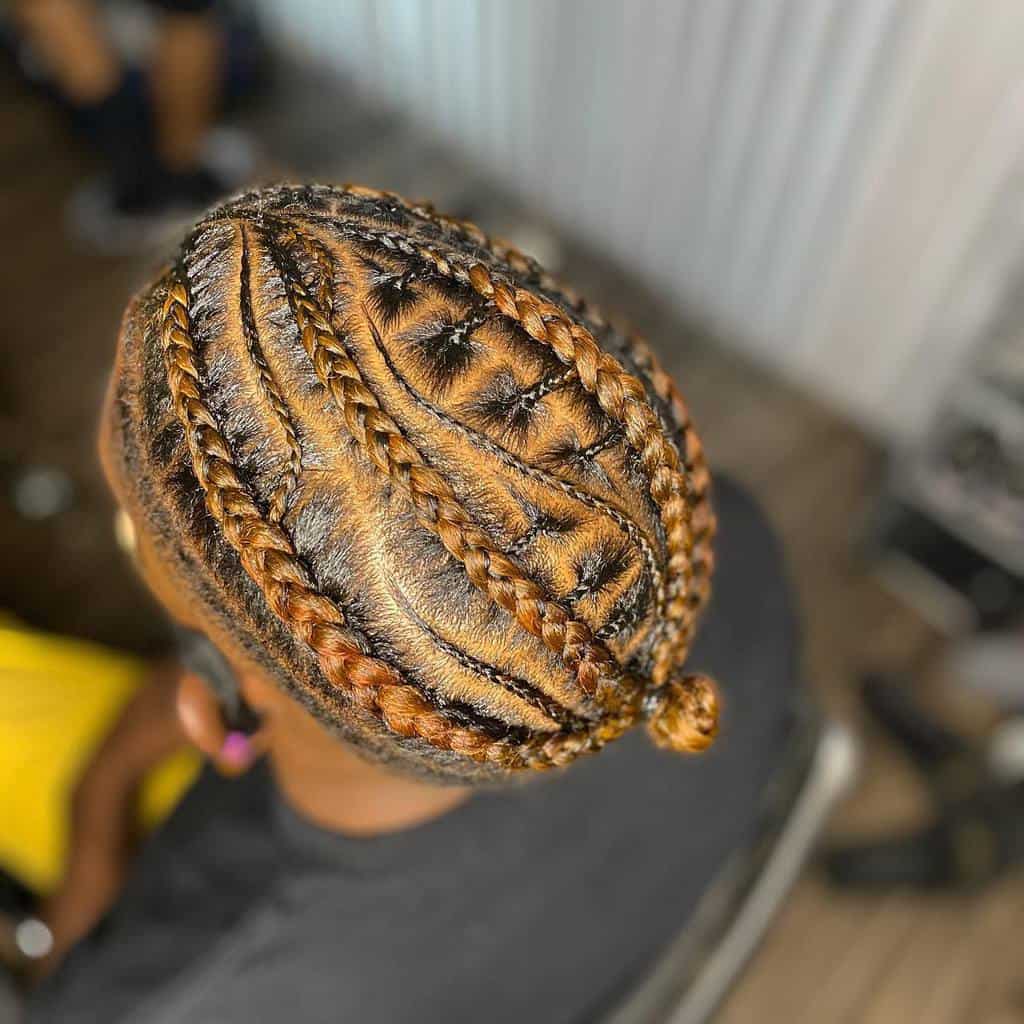

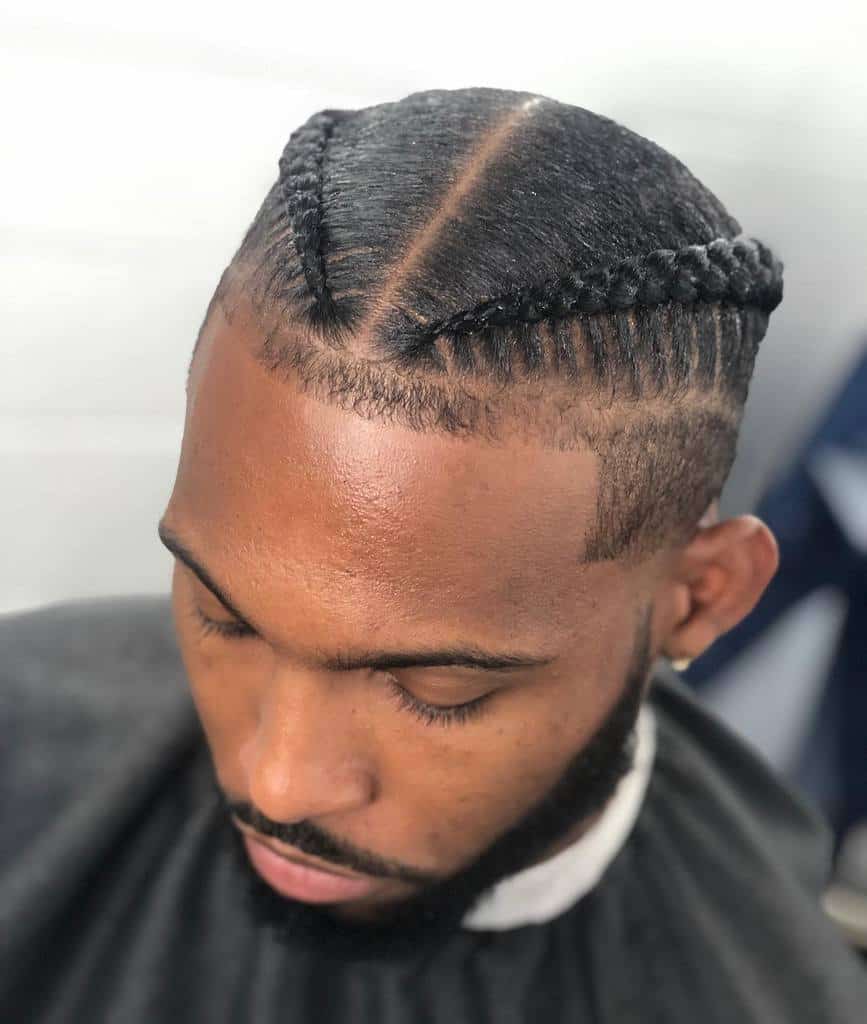

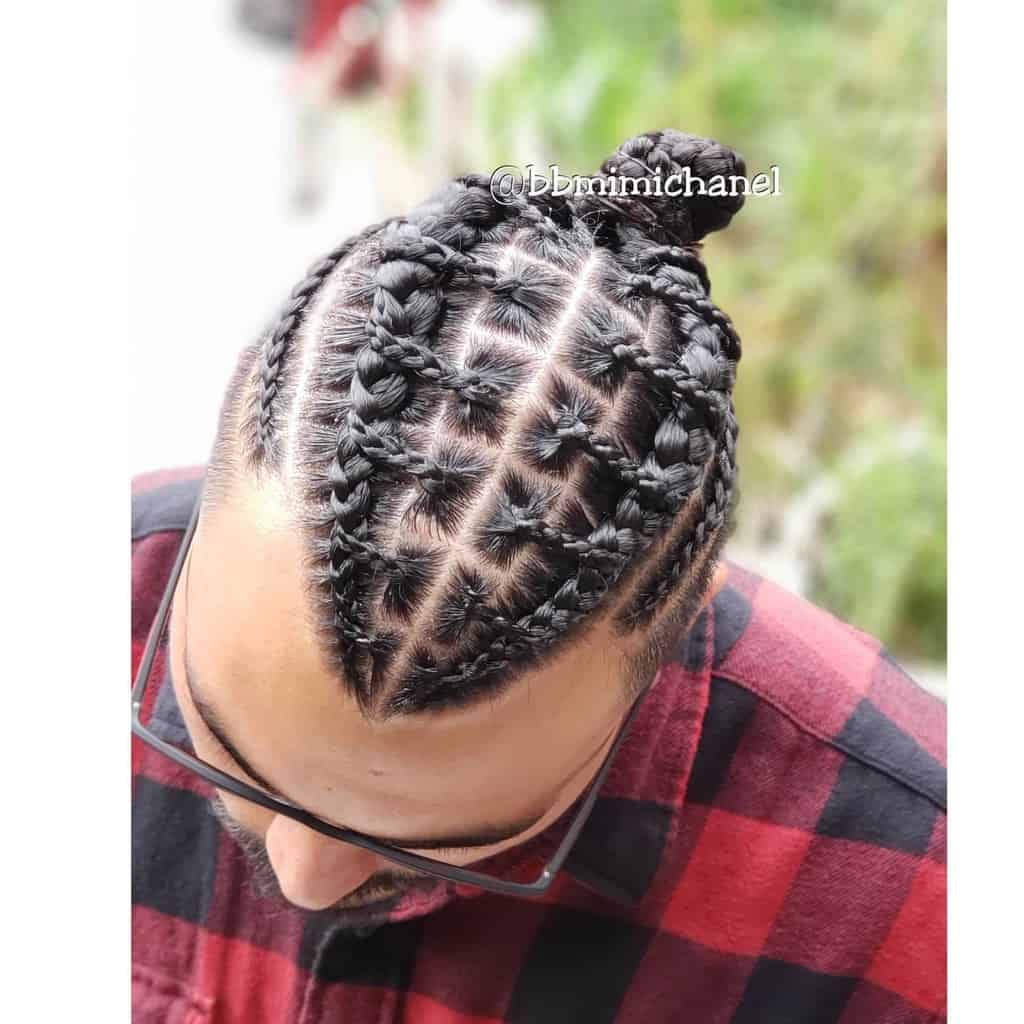
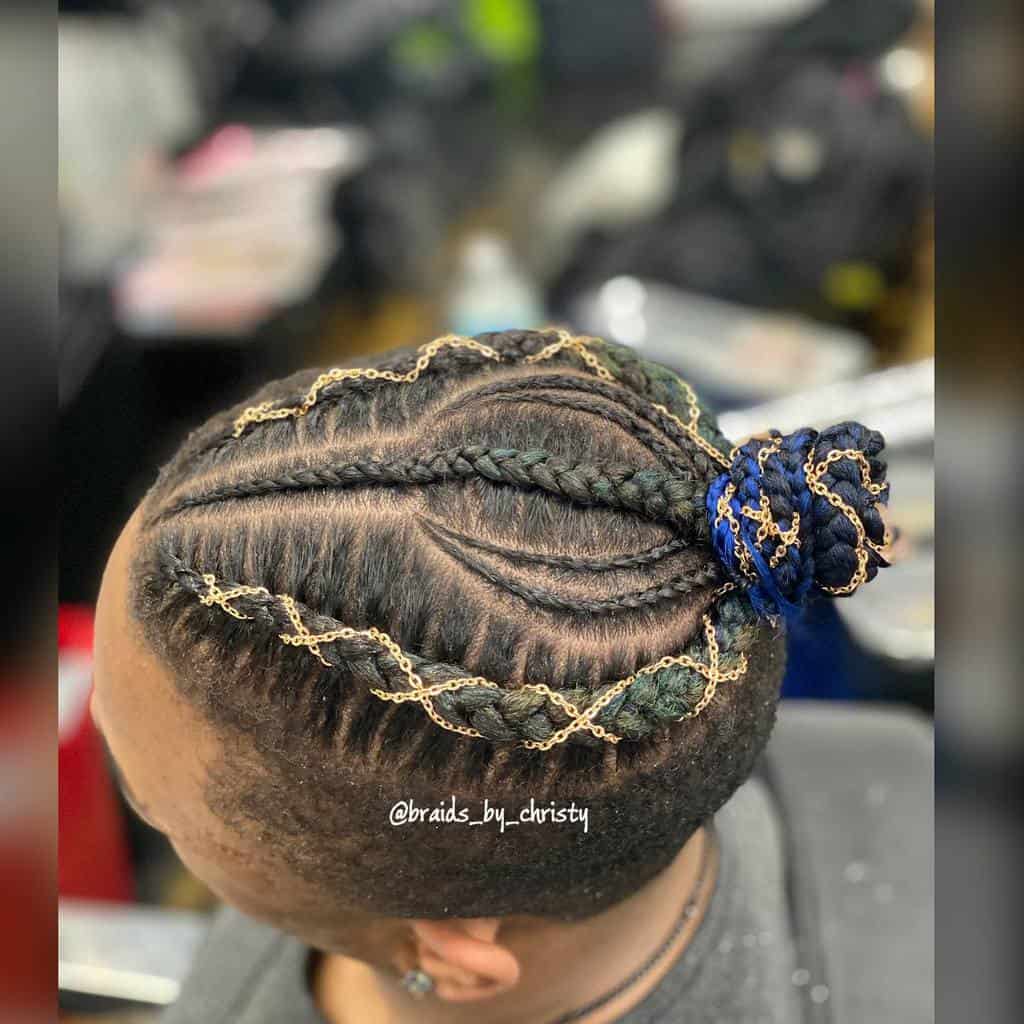

Out of all the specific ways to integrate braids into a bun, the crown braided bun is probably the most popular way of doing so. This typically requires the hair to be divided into two sections, with each being cornrowed to the back of the head, and finally tied into a bun.
The shape the braids created around the head is what resembles a crown. Complexity can be added to this braid hairstyle by combining it with other techniques and patterns of braiding, such as box braids and cornrow designs.
11. Bun Braids with Accented Design
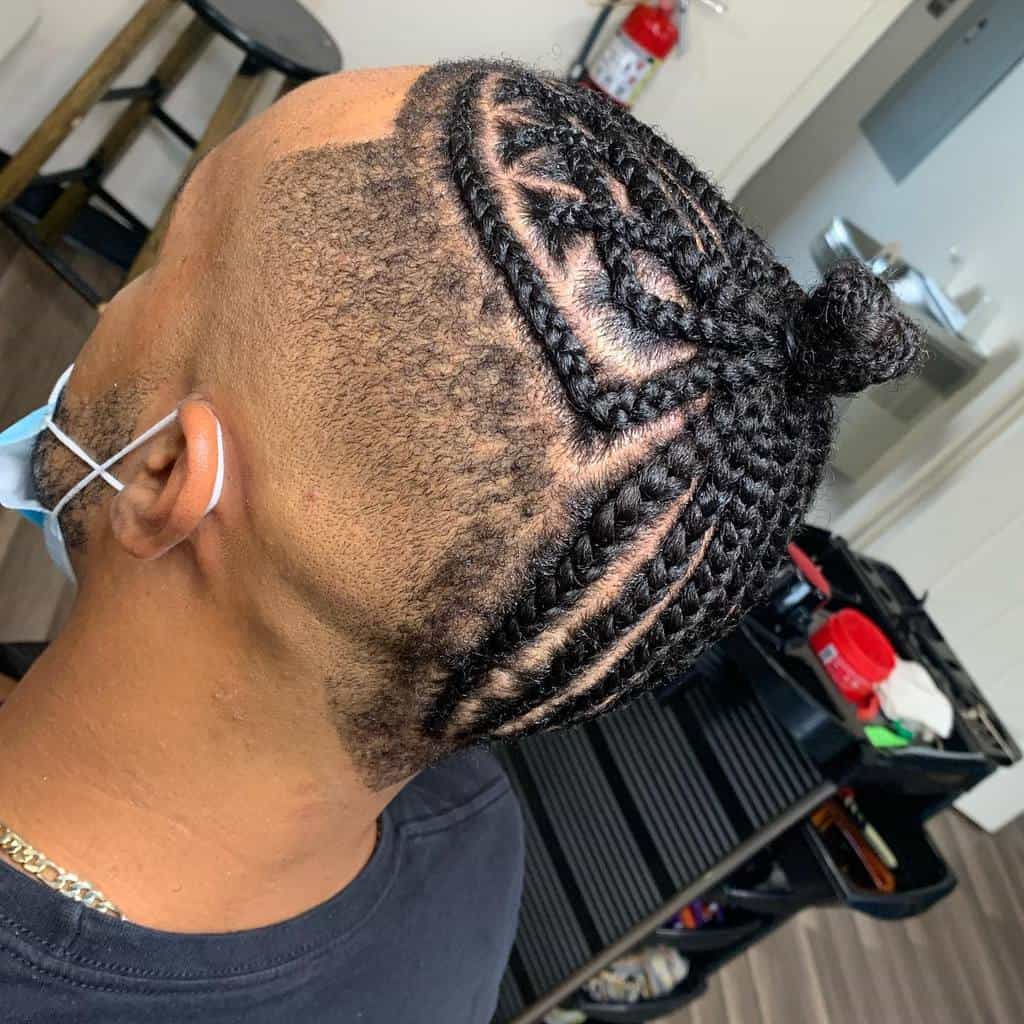
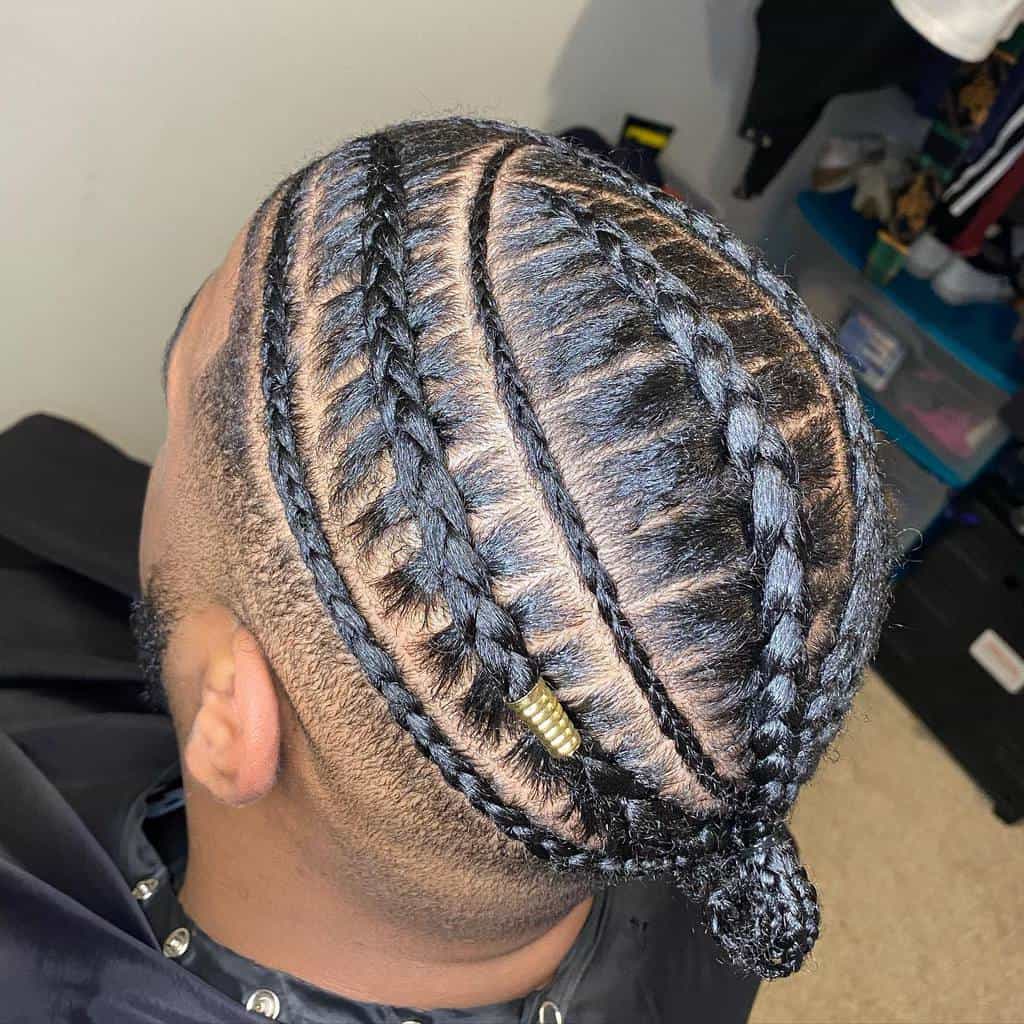
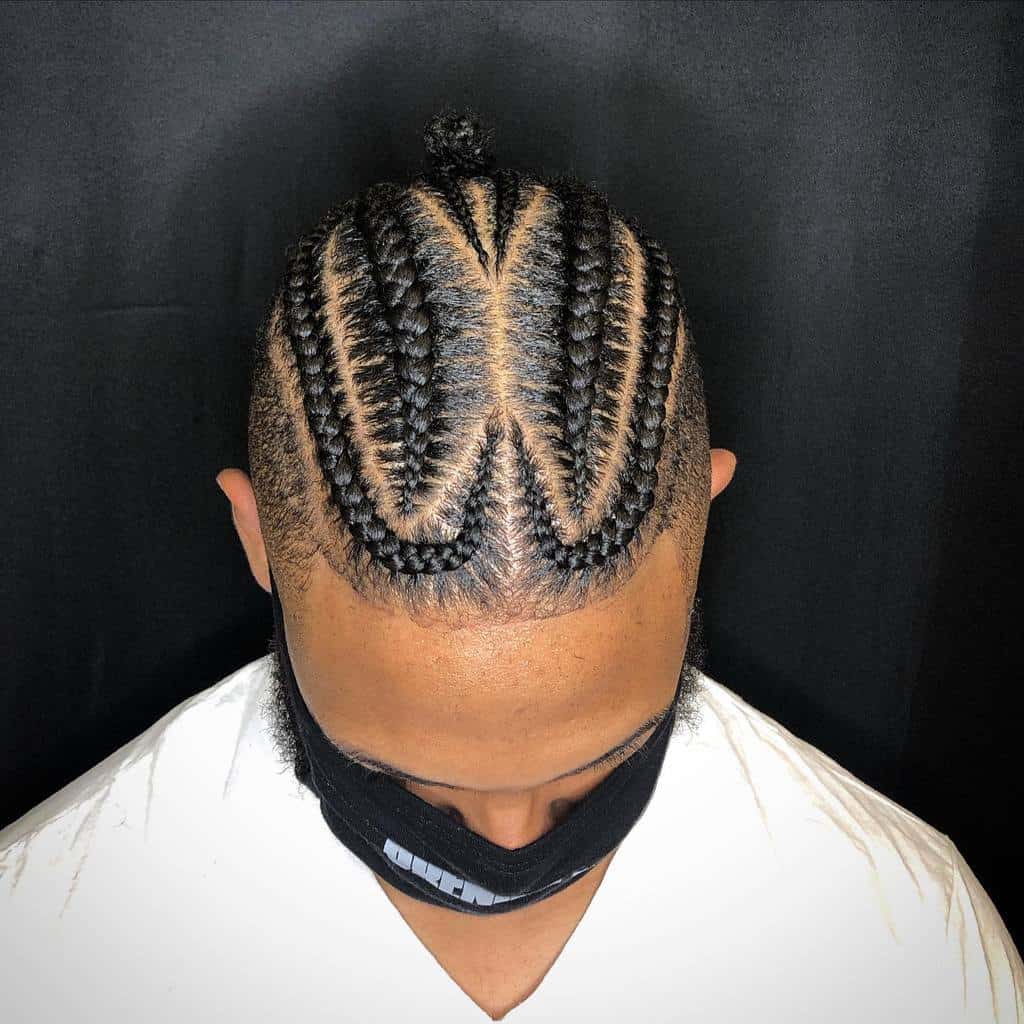

Adding braided accents that break free from the typical patterns of braids is where braided buns start to get interesting. This adds more artistic detail to the style without too loud of a statement.
This can be done by sectioning off parts of the hair dedicated to these braided accents, either before starting to braid, or by doing it freestyle and improvising the accents while braiding across the head.
12. Irregularly-Parted Bun Braids

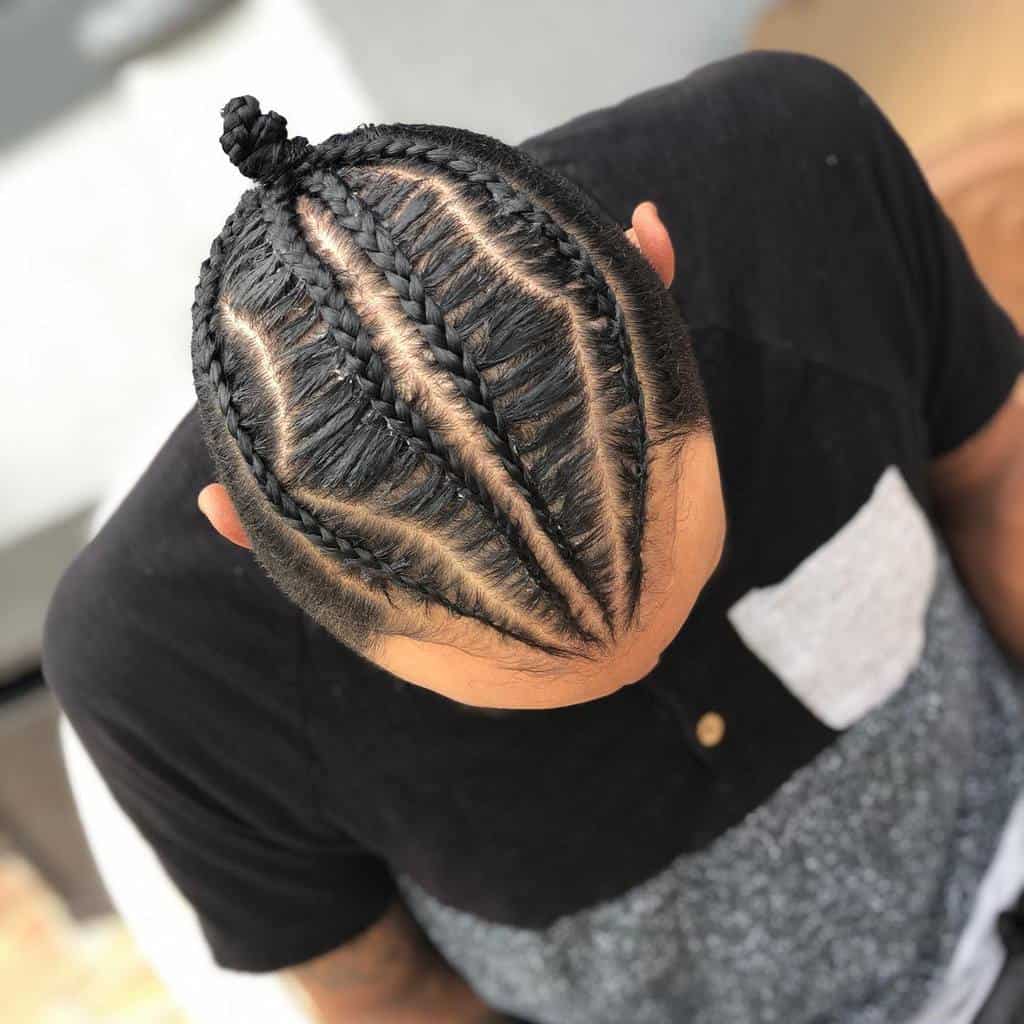
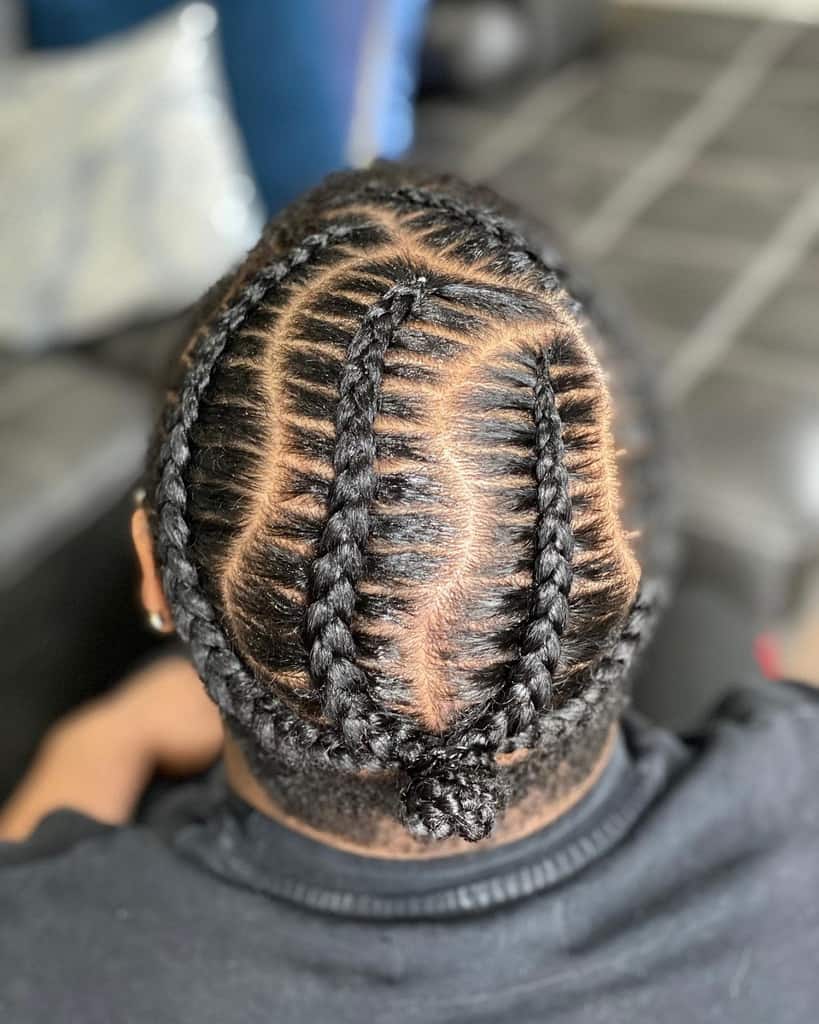
Getting creative with parts is another way to add interest to a braid pattern. These can be done with simple braided hairstyles like crown braids to more detailed graphic braid patterns.
Their size can also vary from small accents to larger, dominant elements of the style. Using braiding gel or cream on natural, coily, or curly hair can help keep hair lying flat, so that parts can be more easily seen.
13. Bun Braids with Pattern Design
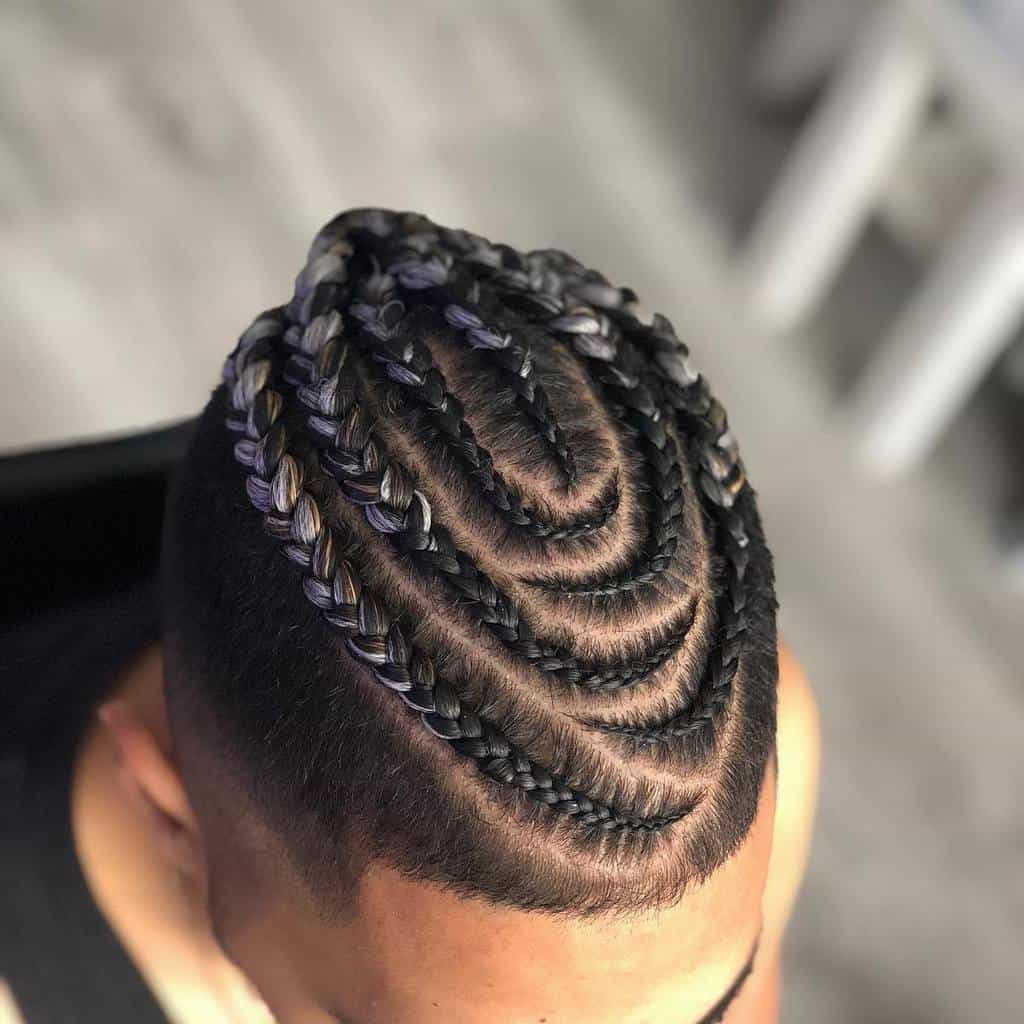

This braided hairstyle incorporates most, if not all of the hair into a more unique, but consistent pattern of braids. It allows the style to be more cohesive yet intriguing at the same time.
Since the braid style is more complex, this is probably where most professional braiders wouldn’t be able to braid this on themselves, and might need someone else’s help for braiding this style properly.
14. Slim Thick Bun Braids

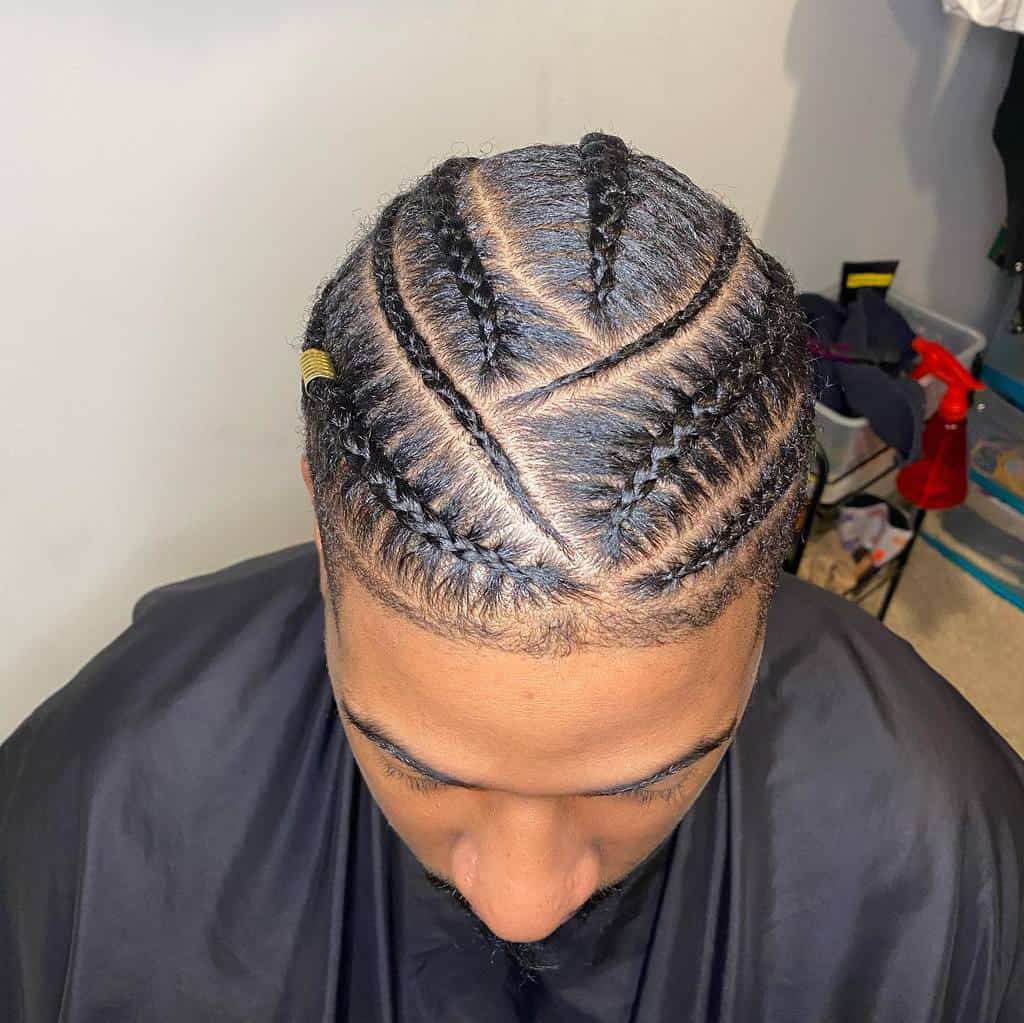

This particular type of patterned braid style features a hybrid of small and large braids next to each other. They are typically braided in the pattern of classic cornrows, but with size variations.
Nevertheless, there is the option of switching up the pattern a bit while still sticking to the theme of braiding every other braid big and small.
15. Graphic Bun Braids
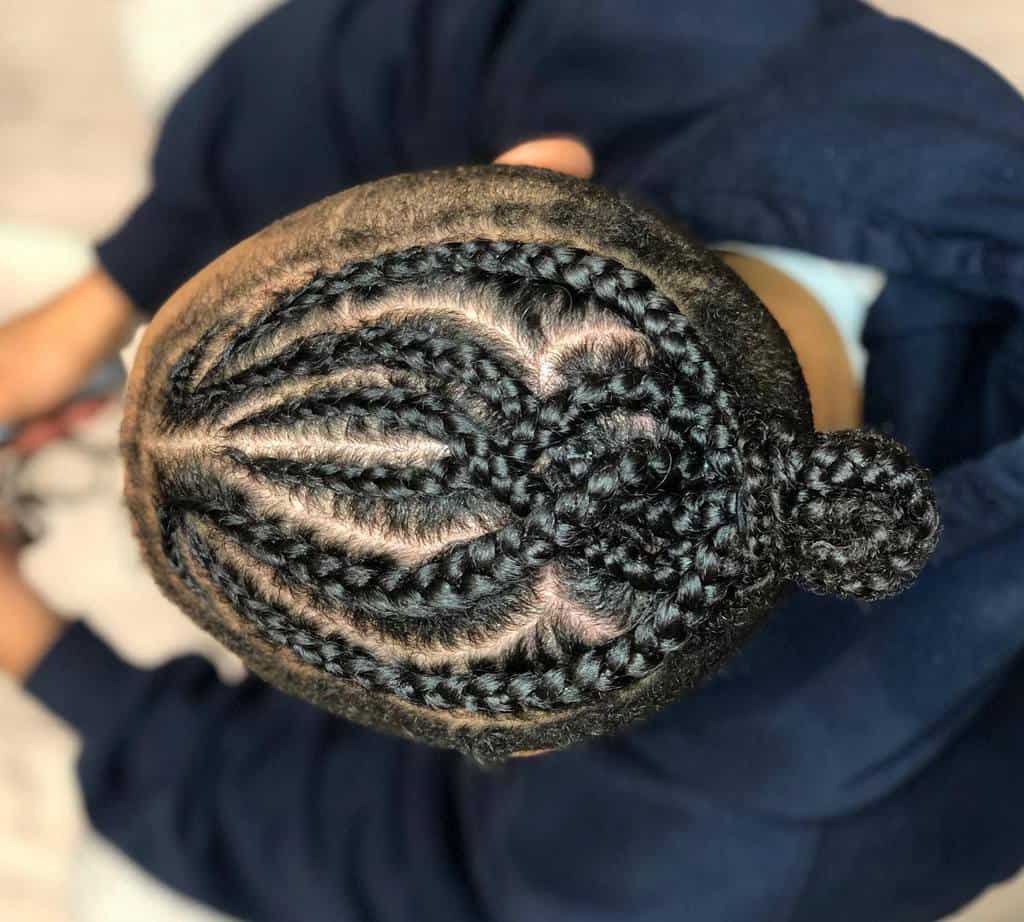


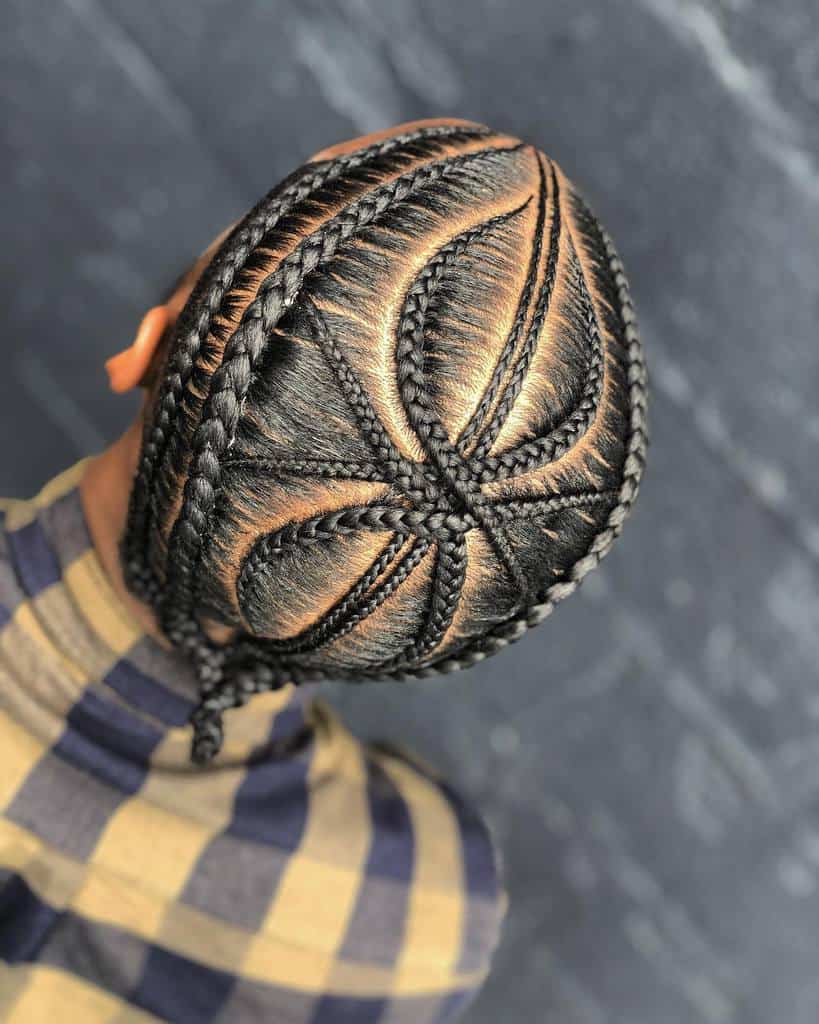


Some of the most sophisticated braid designs are close to looking like pictures, where most of them need to be preplanned with sectioning before braiding.
The amount of detail requires a lot of practice in order to reach a certain level of proficiency, so having someone do them for you is your best choice to attain the best quality.
16. Fishbone Bun Braids

Most often this is achieved by sectioning off smaller areas of hair for the smaller braids that are to lead to the larger braids. The appearance of the small braids that taper out in thickness from the larger ones is what gives the impression of a fishbone.
This intricate way of braiding is a step up from more common, simple braided buns, and may attract a few more lingering gazes.
17. Bun Braids with Hair Accessories
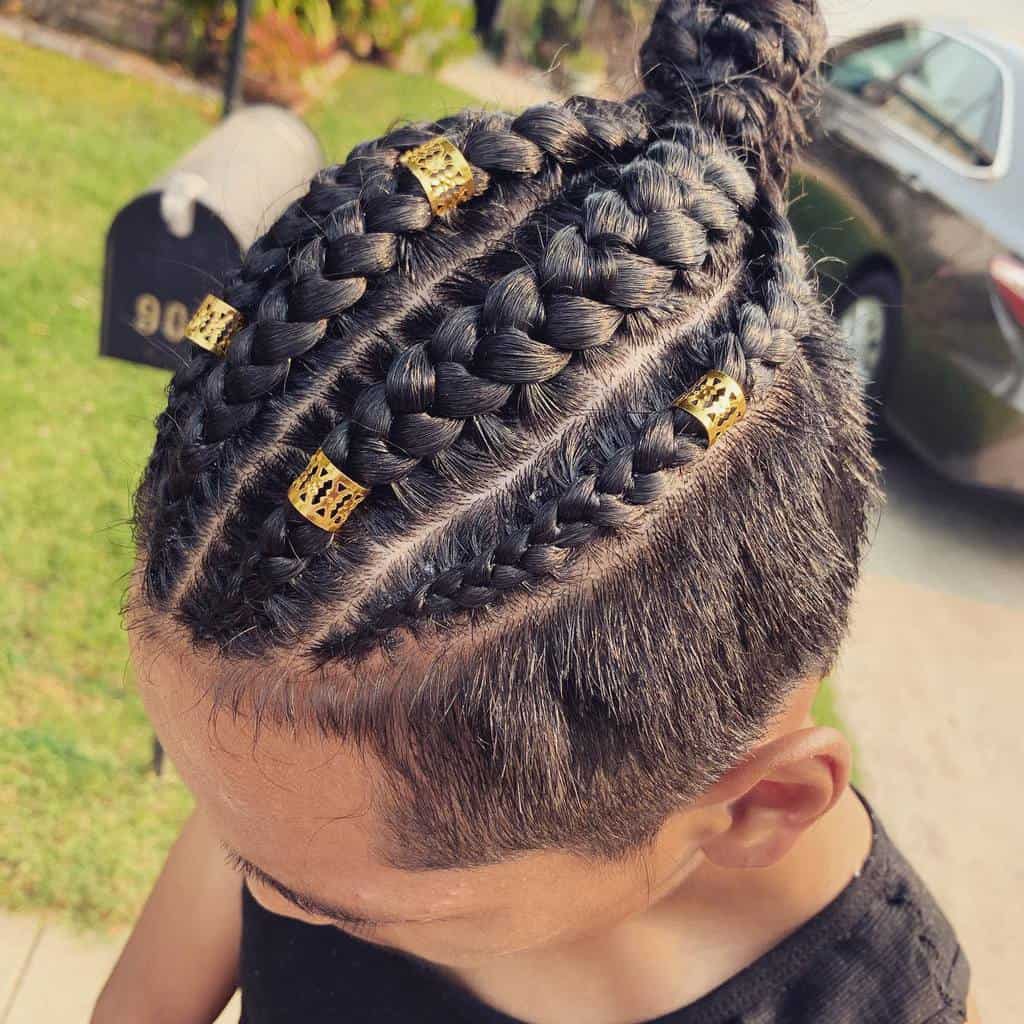


Hair accessories are another way to add bling to your style. These include various beads and jewelry, with most of them as clip-ins, since these are the most versatile and can be done as a finishing touch after braiding the whole hairstyle.
18. Bun Braids with Color

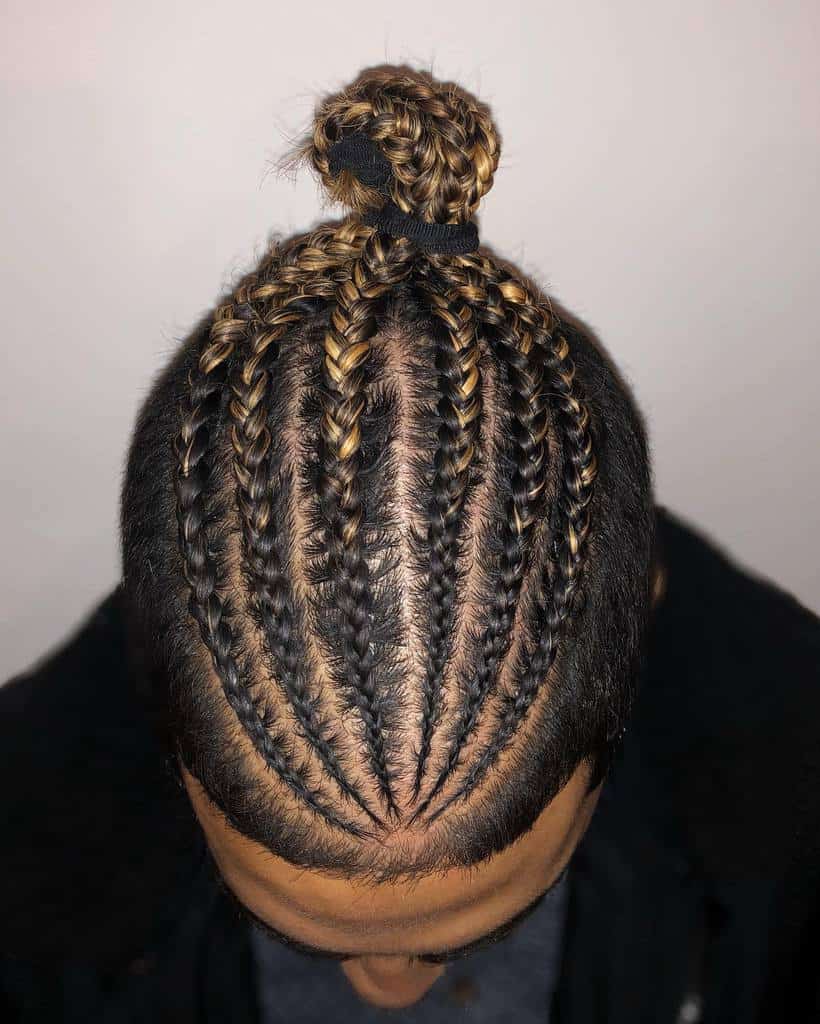


Color is another dimension to play around with when it comes to braided bun styles. Braids allow the freedom to choose whether to color hair before braiding, or intertwining hair extensions or other materials into the hair while braiding.
As stated previously, this can be done by either combining the hair extensions with the originally attached hair from the beginning of the braid, or by gradually adding locks of hair further down the braid for a more blended look. Weaving in hair extensions is also a healthier, less damaging, lower-commitment option for adding color to your braided bun.
Those looking for the lite version of this braid hairstyle can go for colors that are not too different from their natural hair color, while those seeking more contrast and dynamism in their style can try brighter, artificial-looking colors.
19. Hybrid Bun Braids



Most of the elements displayed in this article can also be combined together in a fusion of creative ways to style braids.
From different techniques, such as cornrows and box braids, to various sizes, patterns, accessories, and colors, there are countless styles to add to the history of men’s hairstyles.



